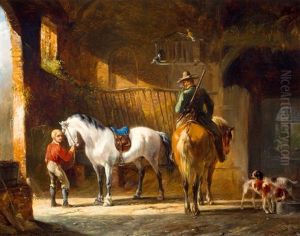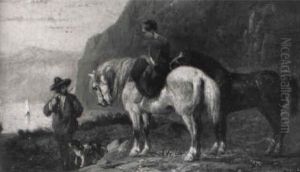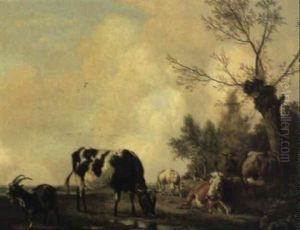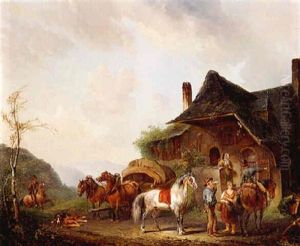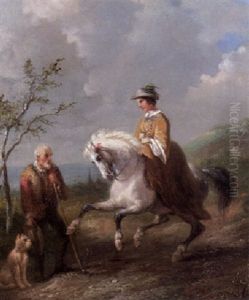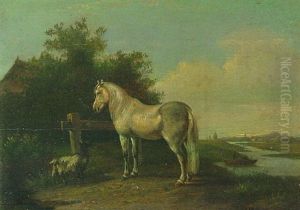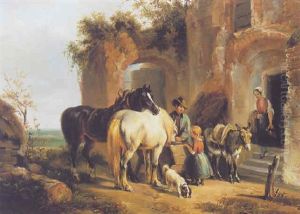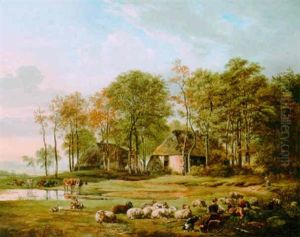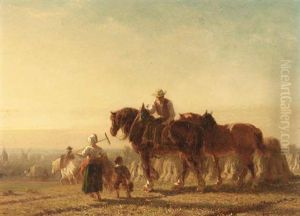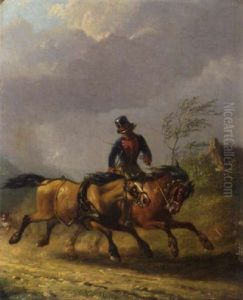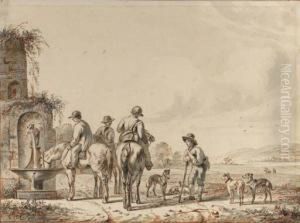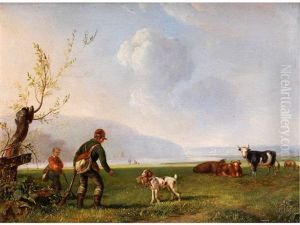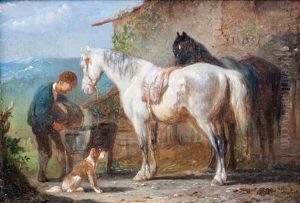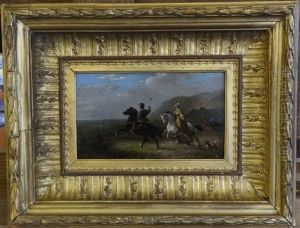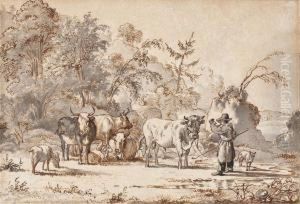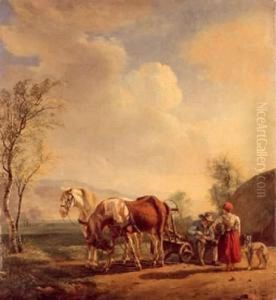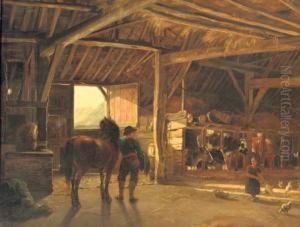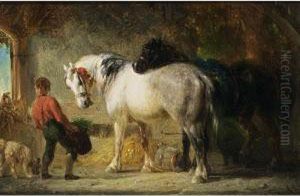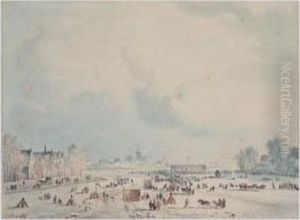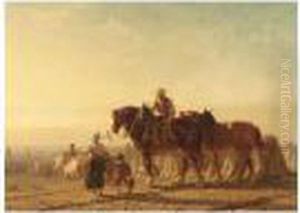Pieter Frederick Van Os Paintings
Pieter Frederik van Os was a Dutch painter, known primarily for his pastoral landscape paintings and his skills in depicting animals, particularly horses, with remarkable accuracy and feeling. Born on February 8, 1776, in The Hague, Netherlands, into an artistic family, his father, Jan van Os, was a notable still-life painter, while his mother, Susanna de la Croix, and his siblings, Georgius and Maria Margaretha, were also artists. This environment undoubtedly influenced Pieter Frederik and provided a fertile ground for his artistic development.
Initially, van Os received artistic training from his father, learning the intricacies of still-life painting. However, his passion for animals and landscapes soon became evident. As he matured, he began to specialize in these subjects, drawing inspiration from the Dutch rural life and the work of 17th-century Dutch masters. Van Os is often associated with the Romantic movement, which emphasized emotion and a glorification of the past and nature. His paintings frequently imbibe a sense of tranquility and bucolic charm, with careful attention given to the anatomical accuracy of the animals he portrayed.
Throughout his career, van Os collaborated with other artists, a common practice at the time. He would often paint the animals in scenes while other artists would complete the landscapes or human figures. His works were well received, and he exhibited at various venues, including the Salon de Paris, gaining recognition beyond the Dutch borders.
Besides being a painter, van Os also engaged in printmaking and was a member of the Royal Academy of Fine Arts in Amsterdam. His legacy includes influencing other animaliers (artists specializing in animal paintings) and contributing to the Dutch Romantic tradition in art.
Pieter Frederik van Os died on March 28, 1839, in The Hague. His body of work continues to be appreciated for its technical skill and its serene and pastoral beauty. His paintings can be found in various museums and private collections, attesting to his enduring appeal and the significant role he played in the Dutch art scene during his lifetime.
